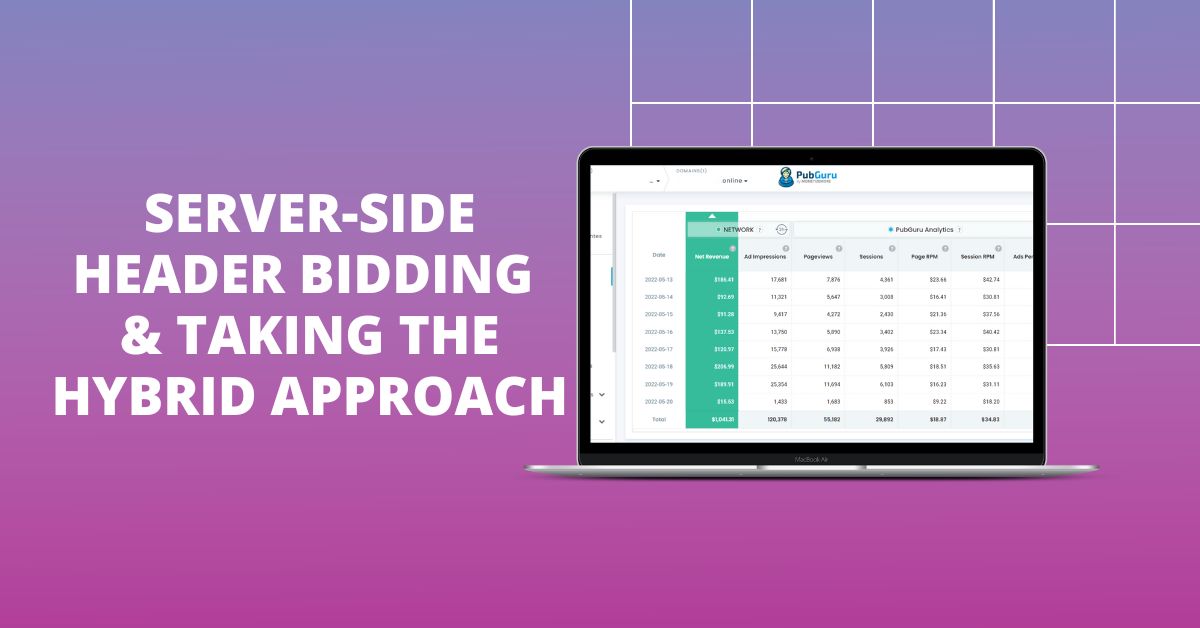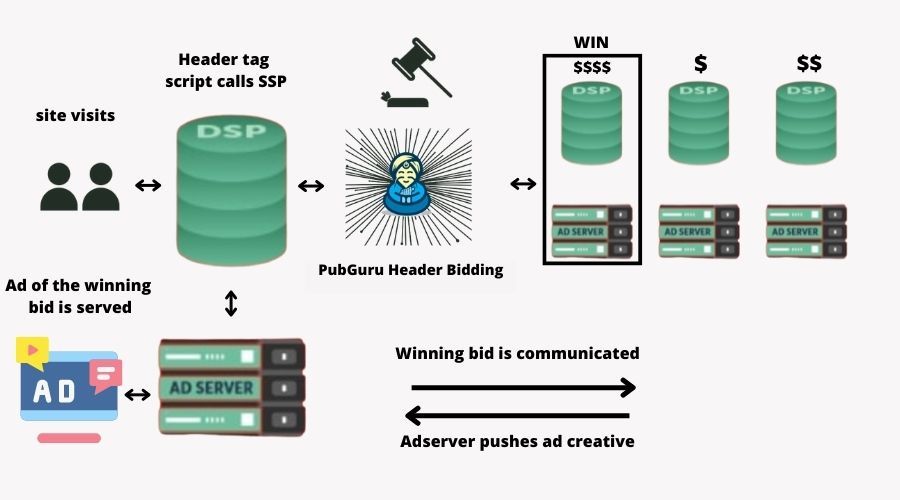
This post was most recently updated on August 8th, 2022
Header bidding is one of the best innovations to hit the online advertising industry in the last decade. This revolutionary technology, which traditionally takes place on the client side/browser, paved the way for publishers to maximize their revenue and generate the most income possible from their programmatic ad inventory.
However, as it’s not a cut and dry solution there are some issues faced by publishers, especially when publishers decide to scale and increase their ad stack.
As more ad networks/bidders get added to their auction, the page load and site latency increase which harms the reader experience. The importance of ad ops teams finding the right balance between monetization and user experience goals, when optimizing publishing properties, becomes more prevalent.
Another advertising solution that publishers are adopting is a server to server header bidding auction. This blog post is going to explain how server-side header bidding works and its primary benefits. Stay tuned!
Server to server bidding or Server-side header bidding (S2S) refers to the process of a unified auction and bidding taking place on the server-side instead of within the client’s browser.
With auctions moved to an external server instead of the user’s browser, page speed is positively affected, and publishers can leverage multiple ad exchanges, ad networks, and SSPs without compromising on user experience.
Ad networks, SSPs, and advertising exchanges usually go for client-side header bidding to conduct simultaneous auctions on the user’s browser, which can deteriorate page speed. Site speed can become a slow killer in the long term especially with publishers having lots of ad inventory.
Server Side header bidding originated to resolve the site speed issues that came along with client-side header bidding. In S2S, user browser congestion issues are diminished by calling Google Ad Manager and then to the publisher’s current demand partners. The benefits that come with S2S are faster page loads and an overall improved user experience.
Unlike server-side header bidding, client side or browser side header bidding has auctions running in the user’s browser.
In both S2S and client-side bidding, publishers auction off their inventory to various demand partners which then place bids. The winning bid is the highest bid and the ad associated with that bid is served.
S2S is excellent for campaigns that require high viewability rates as ad rendering is much faster than that from client side header bidding. Informational campaigns targeting a general audience or video ads often deliver the best results with this setup.
Here’s why S2S header bidding is better than client-side header bidding:

As mentioned earlier, in S2S header bidding, bids are made on an external ad server unlike client side header bidding which leverages the user’s browser for auctions.
This is what happens in Server-Side Header Bidding:
Despite server-side header bidding’s many features, it is important to choose a partner who will not only maximize your revenue but also make the process transparent and rewarding.
When choosing a server-side bidding partner, you should consider the following parameters.
Server to server also has its pitfalls. One of the significant challenges faced is cookie mismatch or cookie syncing latency. The majority of advertisers rely on cookies to target their intended customers which enables them to laser target their audience and maximize the ROI of their advertising campaigns.
Client-side header bidding does not face the same problem since the cookies are stored in the browser. Due to the lack of the S2S targeting mechanism for advertisers, CPM rates will be much lower compared to a traditional client-side header bidding setup.
Further evidence suggests that S2S technology might not be advanced enough yet to be used as a 100% solution. According to an article from Digiday, publishers who tested running 100% server-to-server header bidding did receive up to 40% increase in page speed, but with a decline of 25-30% decrease in ad earnings.
It is best to use a hybrid model that combines server-to-server (S2S) and client-side header bidding. S2S bidding can be used for demand partners with broader advertising goals, such as brand awareness.
Client-side bidding can then be used for demand partners who target visitors based on cookies and demographics.
It is common for publishers to keep their client-side header bidding partners when they begin testing S2S bidding in order to avoid any revenue loss.
With MonetizeMore’s header bidding solution, PubGuru, we can assist publishers in determining which advertising setup is best for your inventory. With PubGuru, publishers can run hybrid multivariate tests on their advertising partners to decide whether or not they run better as S2S or client-side bidders.


With over ten years at the forefront of programmatic advertising, Aleesha Jacob is a renowned Ad-Tech expert, blending innovative strategies with cutting-edge technology. Her insights have reshaped programmatic advertising, leading to groundbreaking campaigns and 10X ROI increases for publishers and global brands. She believes in setting new standards in dynamic ad targeting and optimization.
10X your ad revenue with our award-winning solutions.